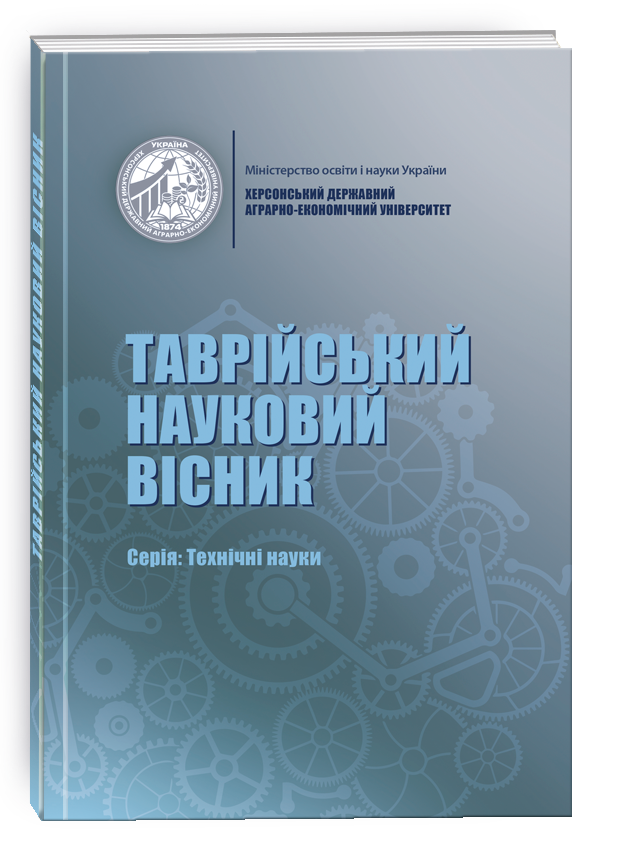CREATION AND JUSTIFICATION OF COMPOSITE FUEL BASED ON WASTEWATER SEDIMENT
DOI:
https://doi.org/10.32782/tnv-tech.2023.3.11Keywords:
sewage sludge, activated sludge, composite fuel, plant waste, granular fuel.Abstract
Today, the scale of generation and accumulation of various wastes continues to grow, which leads to alienation of new territories and environmental pollution. One of the types of such waste is sewage sludge, which is formed at sewage treatment plants in settlements and remains an acute problem of its processing and disposal. It was established that when choosing a rational technological scheme and method of disposal of sewage sludge, it is necessary to solve both ecological and engineering-economic problems, the solution of which requires taking into account a significant number of factors and conditions. The analysis of literary sources showed that the EU and the USA use different methods for sludge disposal. It was determined that for Ukraine, one of the effective methods of sludge processing is the production of granulated or briquetted fuel from it. To reduce the emissions of toxic elements during combustion, which can probably be found in sewage sludge, it is proposed to use them for fuel production by pre-mixing and preparing composites, which include various types of plant waste (straw, husks, sawdust, fallen leaves, etc.) and carbon-containing materials, for example, local fuels (lignite), household waste, in particular polyethylene terephthalate (PET), which cannot be reused. It has been proven that the creation of such a composite fuel does not require complex technical solutions, its cost is expected to be significantly lower than similar briquetted or granulated fuel of another type, and its use in power plants will allow reducing harmful emissions into the atmosphere. Also, the research results of the proposed composite fuel proved that it is not inferior to other alternative fuels in terms of its thermal energy characteristics. Calculations show that when using briquettes or pellets made on the basis of sludge from sewage treatment facilities in the city of Kropyvnytskyi, it is possible to obtain 2300.0 tons T per year, and with annual amounts of sediment in Ukraine of 3.0 million tons – up to 2.0 million tons T.
References
Горбаль Н. І., Мазурик М. М., Микитин О. З. Впровадження циркулярної економіки на основі європейського досвіду // Менеджмент та підприємництво в Україні: етапи становлення та проблеми розвитку. 2021. № 2 (6). С. 280-289. URL: file:///C:/Users/User/Downloads/301-Article%20Text-506-2-10-20220112.pdf.
Зоріна О.В., Маврикін Є.О. Сучасні підходи до обробки та утилізації вторинних осадів господарсько-побутових стічних вод //Водні ресурси. Меліорація і водне господарство. 2021. № 2. С. 55-68.
Бабаєв В.М., Панов В.В., Хайло Я.М., Волков В.М., Горох М.П. Альтернативні технологічні рішення проблеми повної утилізації мулового осаду стічних вод // Комунальне господарство міст. 2018. № 144. С. 32-42.
Шквірко О. М., Тимчук І. С., Мальований М. С. Адаптація світового досвіду утилізації осадів стічних вод до екологічних умов України // Науковий вісник НЛТУ України. 2019. Т. 29. № 2. С. 82-87.
Хруник С.Я., Мазурак О.Т., Саницький М.А., Рецько К. Енергетичне використання осадів стічних вод у цементній промисловості. // Львівський політехнічний університет. 2013. С. 457-461. URL: https://science.lpnu.ua/sites/default/files/ journal-paper/2017/jun/4758/81-457-461.pdf.
Петрова Ю.Ф., Пазюк Ж. А., Снєжкін В. М., Новікова Ю.П. Стан технологій очищення стічних вод в Україні та світі // Теплофізика та теплоенергетика. 2021. т. 43. № 1. С 5-12.
Бондар О.І., Лозовіцький П.С., Машков О.А., Лозовицький А.П. Екологічний стан накопичених осадів стічних вод м. Києва // Науково-практичний журнал Екологічні науки. № 7. С. 38-53. URL: http://ecoj.dea.kiev.ua/archives/2015/7/5.pdf.
Klymenko V., Kravchenko V. Prediction of effective elasticity coefficients of composite biofuel. TECHNICAL JOURNAL. 2020. Vol. 14. No. 2. Р. 94-99. URL: https://doi.org/10.31803/tg-20200311115340.
Карп І. М., П’яних К. Є., Нікітін Є. Є. Проблема утилізації та знешкодження мулових осадів // Энерготехнологии и ресурсосбережение. – 2017. № 2. С. 35-48. URL: http://nbuv.gov.ua/UJRN/ETRS_2017_2_6.
Кашковський В.І., Євдокименко В.О., Каменських Д.С., Ткаченко Т.В., Вахрін В.В. Зольні та золошлакові відходи як багатофункціональна сировина // Наука та інновації. 2017. Т. 13. № 4. С. 53–63. URL: http://dspace.nbuv.gov. ua/handle/123456789/124895.
Клименко В. В., Кравченко В. І. Газифікація твердих біопалив та обґрунтування конструкції газогенераторів для її провадження // Конструювання, виробництво та експлуатація сільськогосподарських машин. 2013. № 43(2). С. 113-119. URL: http://nbuv.gov.ua/UJRN/Zmntz_2013_43%282%29__22.
Клименко В. В., Кравченко В. І., Боков В. М., Гуцул В. І. Технологічні основи виготовлення біопалива з рослинних відходів та їх композитів: монографія /за ред. В.В. Клименка. Кропивницький: ПП «Ексклюзив-Систем», 2017. 162 с. URL: http://dspace.kntu.kr.ua/jspui/bitstream/123456789/6980/1/MonographyKlym. pdf.
Клименко В.В., Кравченко В.І., Кириченко А.М, Личук М.В., Солдатенко В.П. Експериментальна оцінка виготовлення твердого біопалива з композитів на основі рослинних відходів // Энерготехнологии и ресурсосбережение. К. 2016. (№ 3). С. 18-24. URL: http://nbuv.gov.ua/UJRN/ETRS_2016_3_4.







